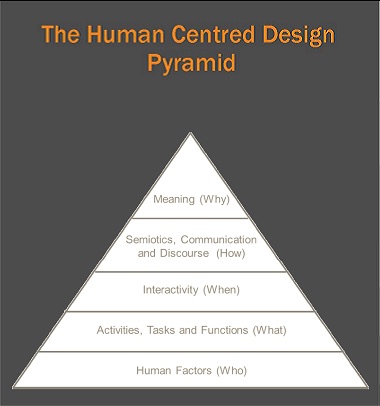Human Centred Design involves techniques which empathise with, interact with, and stimulate people, achieving an understanding of their needs, desires and perspectives which often transcends that which they themselves knew and realised.
It can be considered a form of structured empathy which leads to products, systems and services which are physically, perceptually, cognitively and emotionally intuitive.
Human Centred Design considers the needs and desires of people, ranging from physical ergonomic requirements to metaphysical issues of meaning.

Human Centred Design involves many tools ranging from simple physical anthropometric data through to speculative approaches for analysing future fictions.
Facts Regarding Humans and Society
- Anthropometric data sets and models
- Biomechanical data sets and models
- Psychophysical data sets and models
- Cognitive data sets and models
- Emotional data sets and models
- Psychological data sets and models
- Sociological data sets and models
- Philosophical data sets and models
Capture of Meanings and Needs
Verbally based
- Ethnographic interviews
- Questionnaires
- Day-in-the-life analysis
- Cognitive task analysis
- The five whys
- Conceptual landscape
- Think aloud analysis
- Metaphor elicitation
- Be your customer
- Customer journey
- Personas
- Scenarios
- Extreme Users
Non Verbally based
- Game playing
- Cultural Probes
- Visual journals
- Error analysis
- Fly-on-the-wall observation
- Customer Shadowing
- Body language analysis
- Facial coding analysis
- Physiological measures
- Electroencephalograms
Simulation of Possible Futures
- Role playing
- Focus groups
- Co-design
- Experience prototypes
- Para-functional prototypes
- Future fictions
Human Centred Design reverses the traditional logic of ”technology push” by starting from the meanings and metaphors which emerge from discussions with people, observations of people and analysis of societal trends.
| customer testing | ||||||
| prototyping | ||||||
| technical specifications | ||||||
| metaphor co-design | ||||||
| meaning elicitation | ||||||
| time | ||||||